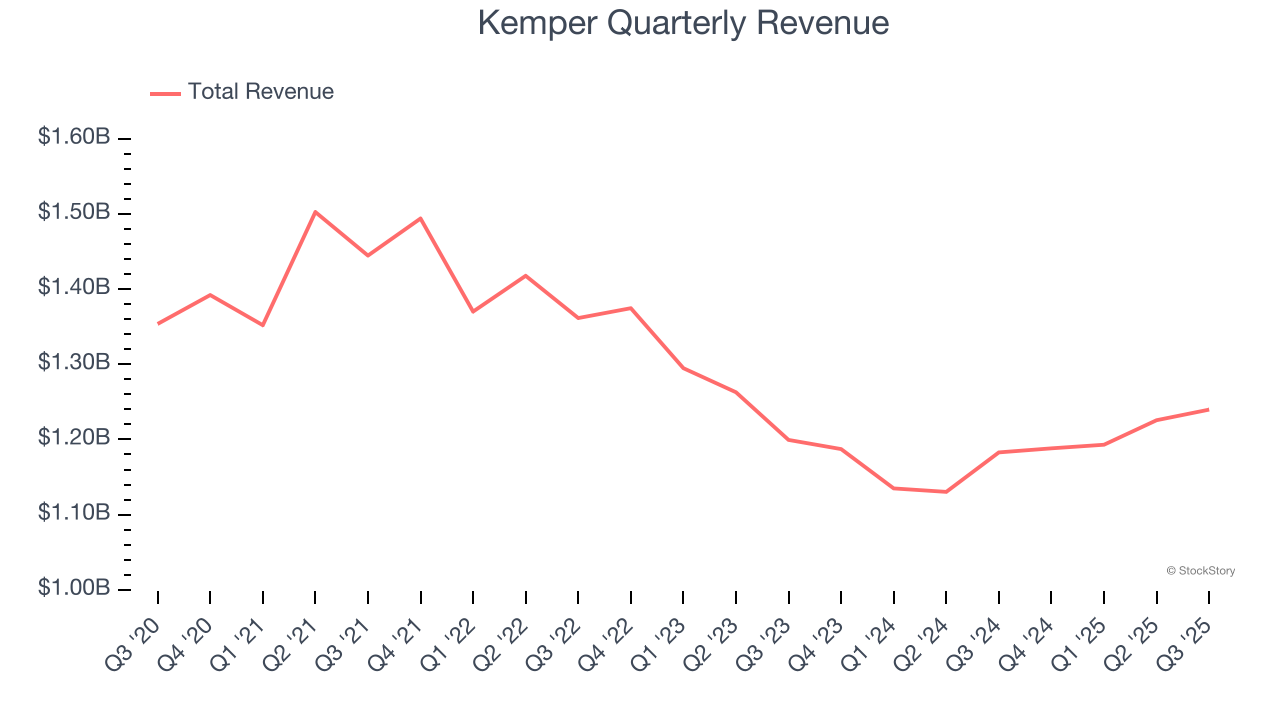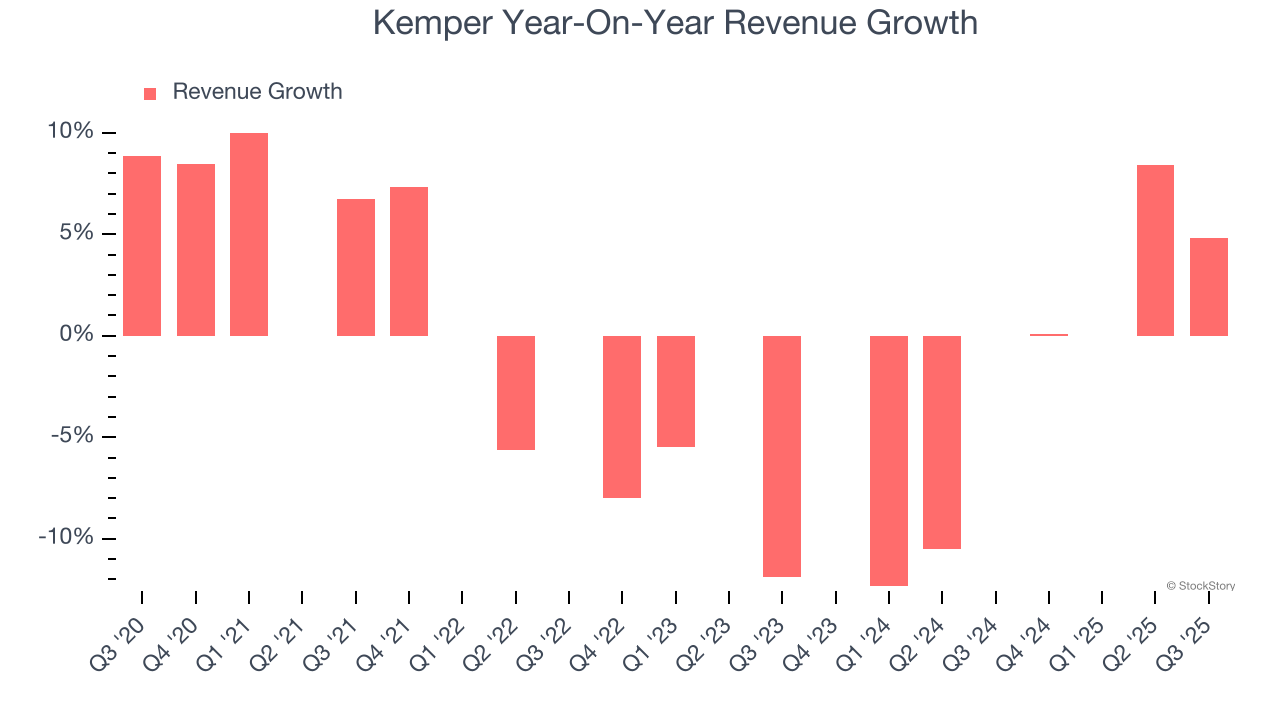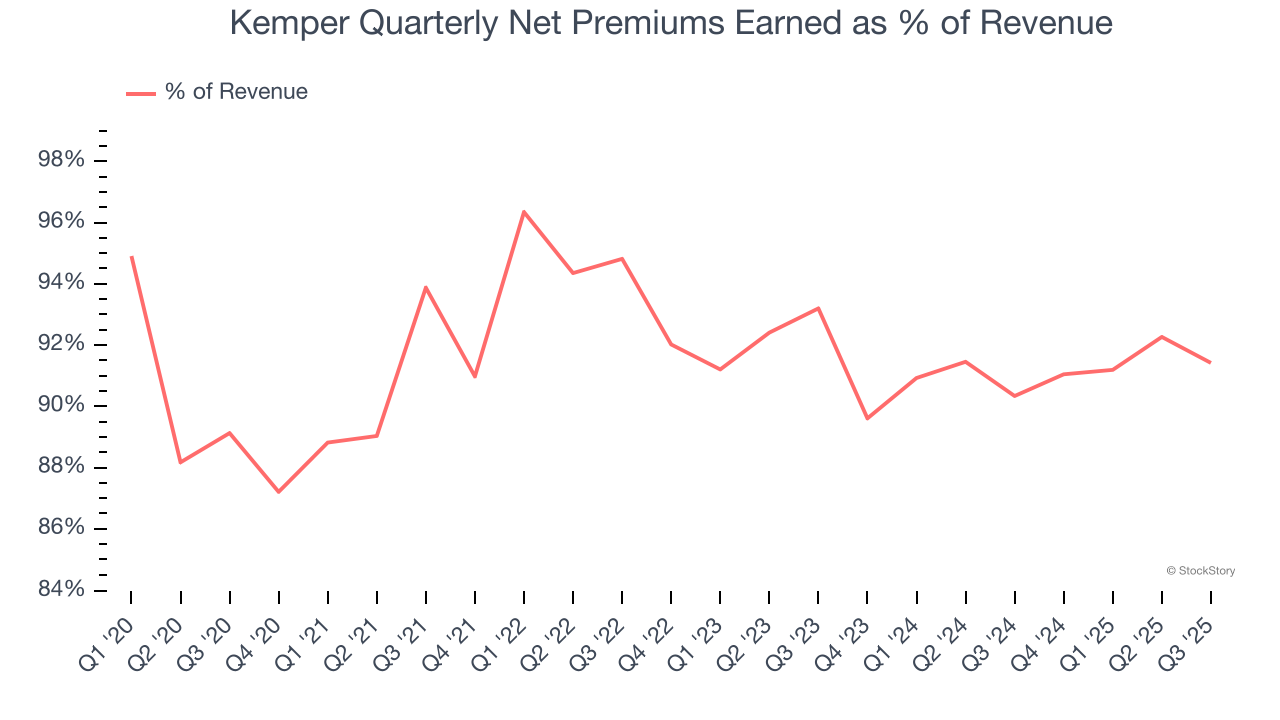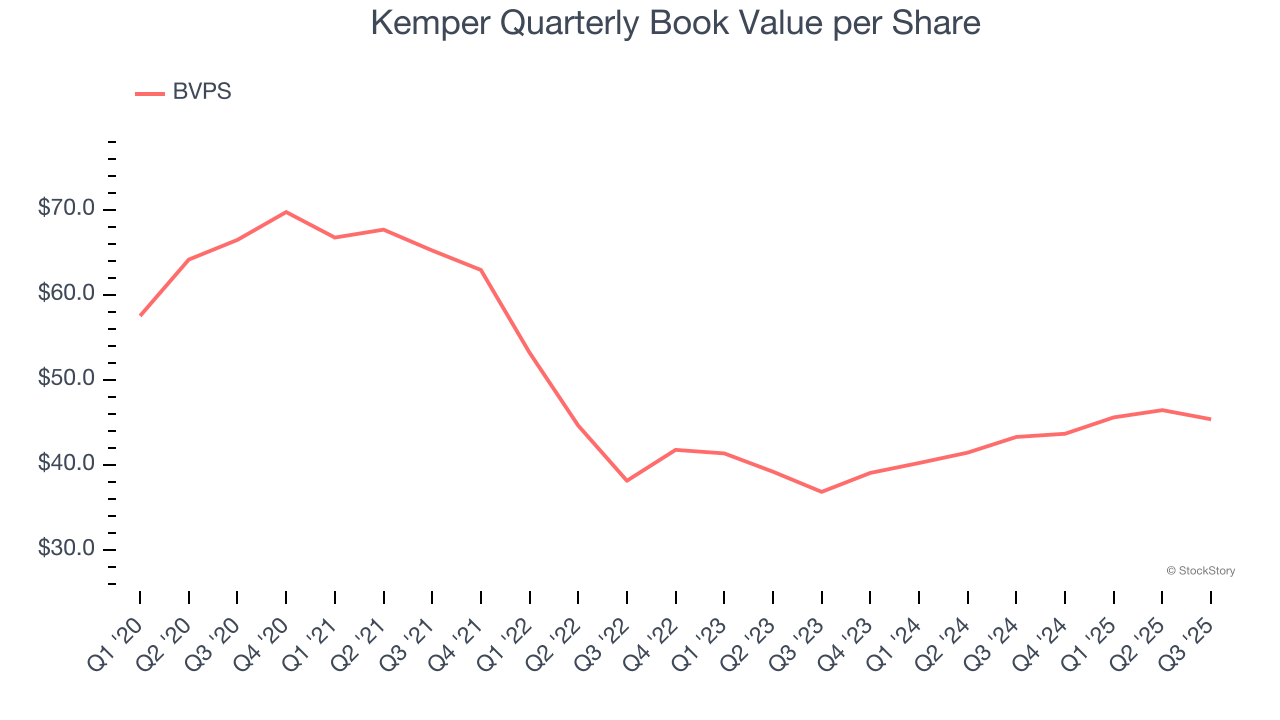
Insurance holding company Kemper (NYSE:KMPR) reported revenue ahead of Wall Streets expectations in Q3 CY2025, with sales up 4.8% year on year to $1.24 billion. Its non-GAAP profit of $0.33 per share was 75% below analysts’ consensus estimates.
Is now the time to buy Kemper? Find out by accessing our full research report, it’s free for active Edge members.
Kemper (KMPR) Q3 CY2025 Highlights:
“Our results for the quarter were disappointing and below our expectations,” said C. Thomas Evans, Jr., Interim CEO.
Company Overview
Originally known as Unitrin until rebranding in 2011, Kemper (NYSE:KMPR) is an insurance holding company that provides automobile, homeowners, life, and other insurance products to individuals and businesses across the United States.
Revenue Growth
Big picture, insurers generate revenue from three key sources. The first is the core business of underwriting policies. The second source is income from investing the “float” (premiums collected upfront not yet paid out as claims) in assets such as fixed-income assets and equities. The third is fees from various sources such as policy administration, annuities, or other value-added services. Kemper struggled to consistently generate demand over the last five years as its revenue dropped at a 1% annual rate. This was below our standards and is a sign of poor business quality.

We at StockStory place the most emphasis on long-term growth, but within financials, a half-decade historical view may miss recent interest rate changes, market returns, and industry trends. Kemper’s recent performance shows its demand remained suppressed as its revenue has declined by 2.8% annually over the last two years.  Note: Quarters not shown were determined to be outliers, impacted by outsized investment gains/losses that are not indicative of the recurring fundamentals of the business.
Note: Quarters not shown were determined to be outliers, impacted by outsized investment gains/losses that are not indicative of the recurring fundamentals of the business.
This quarter, Kemper reported modest year-on-year revenue growth of 4.8% but beat Wall Street’s estimates by 1.5%.
Net premiums earned made up 91.6% of the company’s total revenue during the last five years, meaning Kemper lives and dies by its underwriting activities because non-insurance operations barely move the needle.

Markets consistently prioritize net premiums earned growth over investment and fee income, recognizing its superior quality as a core indicator of the company’s underwriting success and market penetration.
While Wall Street chases Nvidia at all-time highs, an under-the-radar semiconductor supplier is dominating a critical AI component these giants can’t build without. Click here to access our free report one of our favorites growth stories.
Book Value Per Share (BVPS)
Insurance companies are balance sheet businesses, collecting premiums upfront and paying out claims over time. The float – premiums collected but not yet paid out – are invested, creating an asset base supported by a liability structure. Book value captures this dynamic by measuring:
- Assets (investment portfolio, cash, reinsurance recoverables) - liabilities (claim reserves, debt, future policy benefits)
BVPS is essentially the residual value for shareholders.
We therefore consider BVPS very important to track for insurers and a metric that sheds light on business quality because it reflects long-term capital growth and is harder to manipulate than more commonly-used metrics like EPS.
Kemper’s BVPS declined at a 7.3% annual clip over the last five years. However, BVPS growth has accelerated recently, growing by 11% annually over the last two years from $36.85 to $45.38 per share.

Over the next 12 months, Consensus estimates call for Kemper’s BVPS to grow by 25.4% to $51.52, elite growth rate.
Key Takeaways from Kemper’s Q3 Results
We enjoyed seeing Kemper beat analysts’ net premiums earned expectations this quarter. We were also happy its revenue narrowly outperformed Wall Street’s estimates. On the other hand, its EPS missed and its book value per share fell short of Wall Street’s estimates. Overall, this quarter could have been better. The stock traded down 10.6% to $38.15 immediately after reporting.
Kemper didn’t show it’s best hand this quarter, but does that create an opportunity to buy the stock right now? The latest quarter does matter, but not nearly as much as longer-term fundamentals and valuation, when deciding if the stock is a buy. We cover that in our actionable full research report which you can read here, it’s free for active Edge members.
